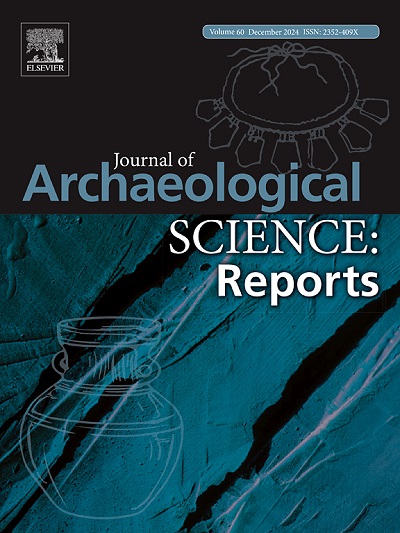Unprepared for work: Preliminary analyses of ad hoc bone tools from the Howiesons Poort layers at Klasies River main site, South Africa
IF 1.5
2区 历史学
0 ARCHAEOLOGY
引用次数: 0
Abstract
The Howiesons Poort technocomplex is known for innovative developments in backed geometric stone tools, ochre and shifts in foraging behaviour, and the possible early use of the bow and arrow. Bone tools and ornaments have been found at a handful of sites from this period. Despite its relative rarity, worked bone has played an important role in discussions around the development of cognitive complexity in humans. Scholars have, however, tended to emphasize formally made bone tools at the expense of informal, expedient or ad hoc bone tools in these assemblages. Here, we present the results of a technological and usewear analysis undertaken on a sample of bone specimens from the Deacon excavations of the Howiesons Poort layers at Klasies River main site. Our aim was to identify ad hoc tools and fragmented pieces of worked bone missed during initial excavations and sorting. Twelve pieces of worked bone were identified, presenting manufacturing wear and ad hoc use. A range of different activities is implicated, with worked bone used on hard and soft surfaces consistent with leather, skin and plant contact. This is the first recognised evidence of informal bone modification at this site and adds to our understanding of bone technology during the Howiesons Poort.
准备工作:对南非Klasies河主站点Howiesons Poort层的临时骨工具进行初步分析
Howiesons Poort技术综合体以有背的几何石器、赭石和觅食行为的变化的创新发展以及弓和箭的早期使用而闻名。在这一时期的一些遗址中发现了骨制工具和装饰品。尽管相对罕见,但加工过的骨头在围绕人类认知复杂性发展的讨论中发挥了重要作用。然而,学者们倾向于强调在这些组合中正式制造的骨工具,而牺牲了非正式的、权宜之计的或特别的骨工具。在这里,我们展示了对Klasies河主要遗址Howiesons Poort层的Deacon挖掘的骨骼标本样本进行的技术和使用分析的结果。我们的目的是确定在最初的挖掘和分类中丢失的临时工具和破碎的工作骨块。鉴定了12块加工过的骨头,呈现出制造磨损和特殊使用。涉及一系列不同的活动,与皮革、皮肤和植物接触一致的坚硬和柔软表面上使用的工作骨。这是该遗址首次发现非正式骨修饰的证据,增加了我们对Howiesons港口期间骨技术的理解。
本文章由计算机程序翻译,如有差异,请以英文原文为准。
求助全文
约1分钟内获得全文
求助全文
来源期刊

Journal of Archaeological Science-Reports
ARCHAEOLOGY-
CiteScore
3.10
自引率
12.50%
发文量
405
期刊介绍:
Journal of Archaeological Science: Reports is aimed at archaeologists and scientists engaged with the application of scientific techniques and methodologies to all areas of archaeology. The journal focuses on the results of the application of scientific methods to archaeological problems and debates. It will provide a forum for reviews and scientific debate of issues in scientific archaeology and their impact in the wider subject. Journal of Archaeological Science: Reports will publish papers of excellent archaeological science, with regional or wider interest. This will include case studies, reviews and short papers where an established scientific technique sheds light on archaeological questions and debates.
 求助内容:
求助内容: 应助结果提醒方式:
应助结果提醒方式:


